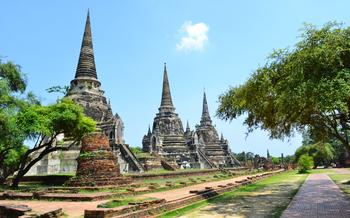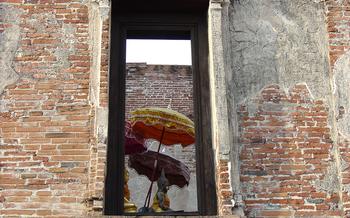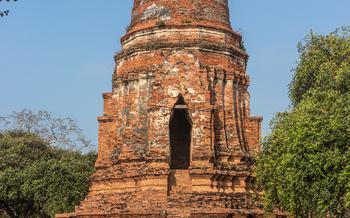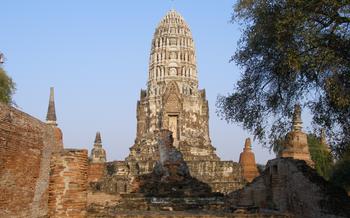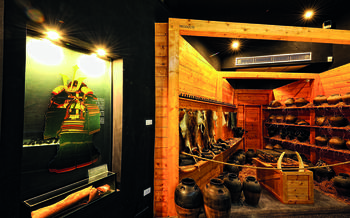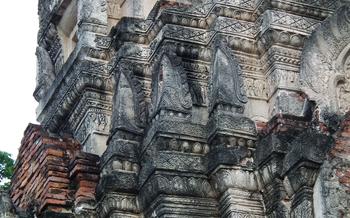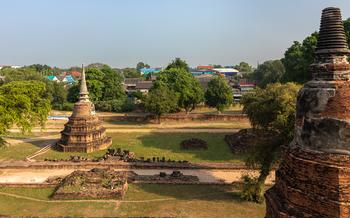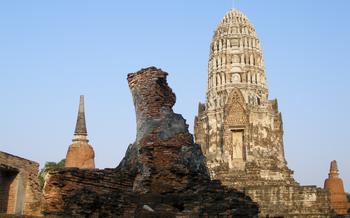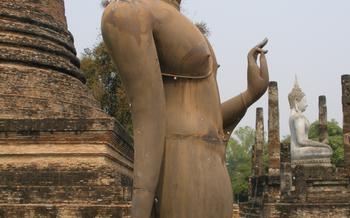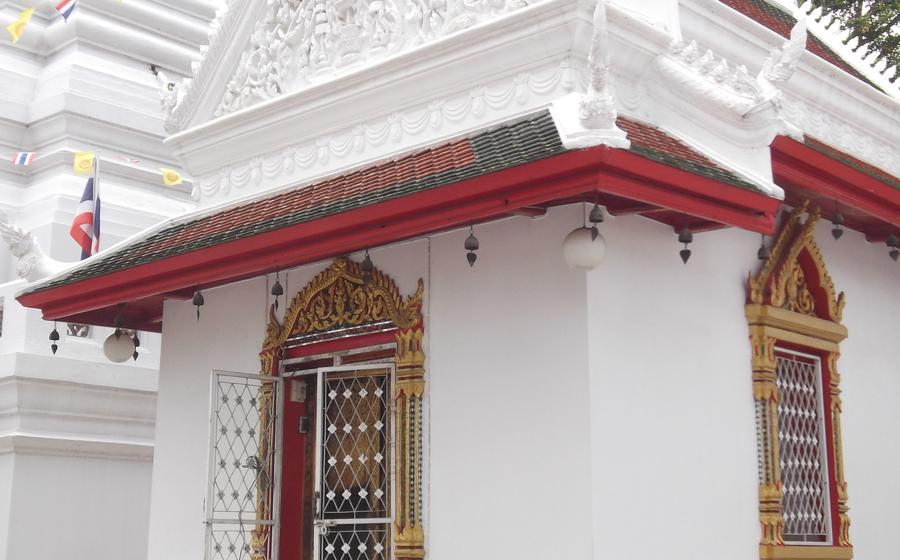
Wat Chumphon Nikayaram
- Wat Chumphon Nikayaram: A Historical Gem
- Exploring the Temple Grounds
- Stunning Buddha Images
- The Story of Luang Pho To
- Annual Temple Fair
- Participating in Temple Rituals
- Learning About Thai Culture
- Exploring the Surrounding Area
- Photography Tips
- Temple Etiquette
- Budget and Planning
- Getting There and Around
- Where to Stay
- What to Eat
- Insider Tip: Hidden Gems
Wat Chumphon Nikayaram: A Historical Gem
Wat Chumphon Nikayaram, a sacred sanctuary nestled in the heart of Ayutthaya, Thailand, stands as a testament to the country's rich history, architectural prowess, and deep-rooted Buddhist traditions. Constructed in the 16th century, during the Ayutthaya Kingdom, the temple has witnessed the rise and fall of dynasties, the ebb and flow of time, and the unwavering devotion of generations of Thai people.
The history of Wat Chumphon Nikayaram is intertwined with the legendary figure of King Naresuan the Great, one of Thailand's most revered monarchs. It is believed that the temple was built under his patronage as a symbol of his gratitude for a resounding victory over the Burmese army. The architectural design of the temple reflects the Ayutthaya architectural style, characterized by its intricate carvings, towering spires, and serene ambiance.
Wat Chumphon Nikayaram holds a significant place in Thai Buddhism as a center of spiritual devotion and monastic education. The temple is home to a community of monks who dedicate their lives to the study and practice of Buddhism, perpetuating the teachings of the Buddha and providing spiritual guidance to the local community.
Exploring the Temple Grounds
Wat Chumphon Nikayaram unfolds as a captivating tapestry of structures, each with its own tale to tell. As you step through the temple's gates, you'll be greeted by a serene atmosphere that invites contemplation and introspection. The layout of the temple is designed to guide visitors on a spiritual journey, leading them through various sections that showcase the temple's architectural prowess and religious significance.
One of the most striking features of the temple complex is the Ordination Hall, which serves as the central hub of religious ceremonies. This grand structure is adorned with intricate carvings and colorful murals depicting scenes from the Buddha's life. Inside, you'll find a sea of golden Buddha images, each exuding an aura of peace and tranquility.
Another notable structure within the complex is the Bell Tower, which stands tall as a symbol of the temple's spiritual strength. Its towering presence invites visitors to pause and reflect on the teachings of the Buddha. The bell's melodious chimes reverberate through the air, creating a sense of serenity that envelops the entire temple grounds.
As you explore further, you'll come across the Drum Tower, which stands in harmony with the Bell Tower. Together, these structures symbolize the harmonious balance between the spiritual and worldly realms. The rhythmic beats of the drums resonate through the air, calling the faithful to prayer and meditation.
Throughout the temple complex, you'll find numerous stupas, chedis, and other religious monuments, each representing a different aspect of Buddhist tradition. These structures are not just architectural wonders but also serve as reminders of the deep spiritual heritage that permeates every corner of Wat Chumphon Nikayaram.
Stunning Buddha Images
Wat Chumphon Nikayaram is renowned for its collection of exquisite Buddha images, each possessing unique features and symbolic significance. Visitors can marvel at the intricate details and serene expressions of these sacred figures, which embody the essence of Thai Buddhist art.
The most prominent Buddha image within the temple is the Phra Buddha Chumphon, a colossal bronze statue that stands majestically at the center of the main shrine hall. This awe-inspiring image, adorned with intricate carvings and shimmering gold leaf, exudes an aura of divinity that captivates all who behold it.
Another remarkable Buddha image is the Phra Buddha Nimit, a smaller but equally impressive statue crafted from white marble. This delicate and serene figure is believed to possess miraculous powers and is revered by devotees who seek blessings and protection.
Visitors can also admire the Phra Buddha Sihing, a rare and ancient Buddha image believed to date back to the Ayutthaya period. Carved from a single block of sandstone, this weathered and timeworn statue exudes an air of profound antiquity and historical significance.
Each Buddha image within Wat Chumphon Nikayaram holds a special place in the hearts of Thai Buddhists, representing different aspects of the Buddha's teachings and embodying the essence of Thai Buddhist art.
The Story of Luang Pho To
Within the hallowed grounds of Wat Chumphon Nikayaram, the tale of Luang Pho To, a revered Buddha image, is whispered among devotees. Legend has it that this sacred image originated from the depths of the Mekong River, emerging amidst a miraculous glow. Villagers, captivated by its divine presence, enshrined it within the temple, where it has remained a source of veneration for generations.
Miracles and legends have woven themselves around Luang Pho To, solidifying its reputation as a potent and benevolent deity. Believers recount stories of the image shedding tears, exuding a soothing fragrance, and even granting wishes to those who seek its blessings with a pure heart.
Thai people hold Luang Pho To in profound reverence, visiting the temple in droves to pay homage and seek solace. They believe that the image possesses the power to bestow good fortune, healing, and protection, making it a sacred destination for those seeking divine intervention.
The allure of Luang Pho To extends beyond its legendary origins and miraculous powers. The image itself is a masterpiece of craftsmanship, showcasing intricate details and serene expressions that captivate the soul. Its serene countenance, radiating compassion and wisdom, invites contemplation and invites a deep connection with the divine.
Annual Temple Fair
The Wat Chumphon Nikayaram temple fair is an annual event that showcases the rich cultural heritage of Ayutthaya. Held during the month of November, the fair attracts thousands of visitors from all over Thailand and beyond.
Festivities and Activities
The temple fair is a vibrant celebration that offers a glimpse into Thai culture and traditions. Visitors can enjoy a variety of activities, including traditional dances, music performances, and martial arts demonstrations. There are also many food stalls selling delicious Thai cuisine, as well as games and rides for children.
Opportunities for Cultural Immersion
The temple fair is a perfect opportunity to immerse yourself in Thai culture. Visitors can interact with locals, learn about their customs and traditions, and experience the warm hospitality of the Thai people. The fair is also a great place to find souvenirs and handicrafts, such as Buddha images, amulets, and traditional clothing.
Participating in Temple Rituals
Wat Chumphon Nikayaram offers visitors a unique opportunity to immerse themselves in Thai Buddhist rituals and practices. These rituals, performed by monks and laypeople alike, are an integral part of the temple's religious and cultural traditions.
One of the most popular rituals is the merit-making ceremony. Devotees purchase offerings of food, flowers, and candles and present them to the monks as a way of expressing their gratitude and seeking blessings. The monks then chant prayers and dedicate the merit to the donors and their loved ones.
Another significant ritual is meditation. The temple grounds are a peaceful and serene environment conducive to meditation and spiritual reflection. Visitors can join the monks in daily meditation sessions or find a quiet corner to practice on their own.
For those seeking a deeper spiritual experience, the temple offers ordination ceremonies. Men and women can temporarily ordain as monks or nuns, following Buddhist precepts and living a monastic lifestyle for a period of time. This is a profound and transformative experience that provides participants with a unique insight into Thai Buddhism.
To participate in any of these rituals, visitors should dress respectfully and observe temple etiquette. It is customary to remove shoes before entering the temple grounds and to refrain from talking loudly or behaving in a disruptive manner. Visitors should also be mindful of the monks' time and not interrupt them unnecessarily.
Participating in temple rituals at Wat Chumphon Nikayaram is a wonderful way to connect with the local culture, learn more about Thai Buddhism, and deepen one's spiritual practice.
Learning About Thai Culture
Wat Chumphon Nikayaram is not just a religious site but also a vibrant hub of cultural learning and exchange. Visitors can immerse themselves in the rich tapestry of Thai culture through various workshops and demonstrations offered within the temple grounds. These activities provide a unique opportunity to witness traditional Thai crafts, such as flower arrangement, fruit carving, and umbrella making, firsthand.
One of the highlights is the traditional Thai dance performance, which showcases the grace and elegance of Thai dancers adorned in colorful costumes. Visitors can also learn about the history and significance of Thai music and instruments through interactive demonstrations. These performances and workshops not only entertain but also offer a glimpse into the soul of Thai culture.
Furthermore, the temple serves as a platform for cultural exchange, where visitors can interact with monks and locals. Monks are often willing to share their knowledge of Buddhism, Thai customs, and the history of the temple. Visitors can also engage in conversations with local worshippers and learn about their daily lives and perspectives. This cultural immersion provides a deeper understanding of Thai society and its unique traditions.
Exploring the Surrounding Area
Wat Chumphon Nikayaram is situated in an area rich in historical and cultural landmarks. Just a stone's throw away from the temple, visitors can explore several notable attractions that offer a deeper insight into Ayutthaya's past and present.
One of the must-visit sites is the Ayutthaya Historical Park, a UNESCO World Heritage Site that encompasses the ruins of ancient temples, palaces, and fortifications. Here, visitors can marvel at the grandeur of the once-mighty capital of the Ayutthaya Kingdom, and learn about its fascinating history.
Another attraction worth exploring is the Chao Phrom Market, a vibrant floating market that showcases the local way of life. Vendors sell a variety of fresh produce, local delicacies, and handicrafts, while visitors can enjoy a leisurely boat ride along the canals and soak in the lively atmosphere.
For those interested in art and culture, the Ayutthaya National Museum is a treasure trove of artifacts and exhibits that provide a comprehensive overview of the province's rich heritage. The museum houses a vast collection of Buddha images, ancient pottery, and traditional costumes, offering visitors a glimpse into the artistic and cultural traditions of Ayutthaya.
By venturing beyond the temple grounds, visitors can gain a well-rounded understanding of the history, culture, and daily life of Ayutthaya, creating a truly immersive and memorable travel experience.
Photography Tips
Wat Chumphon Nikayaram is a visual feast for photographers, offering countless opportunities to capture the temple's architectural grandeur and serene ambiance. Here are some tips to help you make the most of your photography experience:
-
Best Angles: The temple's main chedi, with its intricate carvings and towering spires, is a popular subject for photographers. Experiment with different angles to find the perfect composition, such as shooting from a low perspective to emphasize its height or capturing it against a clear blue sky.
-
Recommended Equipment: A wide-angle lens is essential for capturing the temple's vastness. A tripod will help you stabilize your camera for sharp shots, especially in low-light conditions. If you're interested in close-up photography, a macro lens will allow you to capture the intricate details of the Buddha images and temple decorations.
-
Lighting Conditions: The best time to photograph Wat Chumphon Nikayaram is during the golden hours, just after sunrise or before sunset, when the soft, warm light creates a magical glow. If you're visiting during the midday sun, seek shade or use a fill-in flash to avoid harsh shadows.
Temple Etiquette
When visiting Wat Chumphon Nikayaram, it is essential to observe proper temple etiquette to show respect for the sacred site and its inhabitants.
-
Dress Code: Dress modestly and conservatively. Avoid wearing shorts, tank tops, or revealing clothing. Cover your shoulders and knees, and remove your shoes before entering the temple grounds.
-
Behavior: Be mindful of your actions and speech. Avoid loud noises, disrespectful gestures, and inappropriate behavior. Refrain from smoking, drinking alcohol, or engaging in any activities that may disrupt the temple's tranquility.
-
Respect the Buddha Images: Buddha images are highly revered in Thai culture. Do not touch, climb on, or show any disrespect towards the images. When making offerings, do so with a sense of reverence and gratitude.
-
Interacting with Monks and Locals: Monks are highly respected in Thai society. If you wish to interact with them, approach them politely and respectfully. Remember that they are not tourist attractions, so be mindful of their time and space. When interacting with locals, be friendly and respectful, and try to learn a few Thai phrases to show your appreciation for their culture.
Budget and Planning
Visiting Wat Chumphon Nikayaram is budget-friendly, with a minimal entrance fee of 20 baht (less than $1) for foreign visitors. Additional costs may include donations for temple upkeep, offerings to Buddha images, and souvenirs from the temple shop. Plan to spend at least two hours exploring the temple grounds and participating in rituals.
Budget travelers can save on accommodation by opting for guesthouses or homestays near the temple, which typically offer basic but comfortable rooms for around 200-300 baht per night. Several mid-range and luxury hotels are also available in Ayutthaya, catering to travelers with different budgets.
For meals, there are several street food stalls and local restaurants near the temple where you can sample delicious Thai cuisine at affordable prices. Vegetarian options are widely available, including tofu and vegetable dishes. Remember to try local delicacies such as pad thai, khao soi, and mango sticky rice.
Getting There and Around
Wat Chumphon Nikayaram is conveniently located in the heart of Ayutthaya, making it easily accessible from Bangkok and other parts of the city.
From Bangkok: - Train: Take a train from Bangkok's Hua Lamphong Railway Station to Ayutthaya Station. The journey takes about 1 hour and 30 minutes. From there, you can take a tuk-tuk or taxi to the temple.
- Bus: Take a bus from Bangkok's Mo Chit Bus Terminal to Ayutthaya Bus Station. The journey takes about 2 hours. From the bus station, you can take a tuk-tuk or taxi to the temple.
Within Ayutthaya: Once in Ayutthaya, you can explore the city and the temple complex using various transportation options.
-
Bicycle: Renting a bicycle is a great way to explore the ancient city of Ayutthaya. You can rent a bicycle from many shops near the temple.
-
Tuk-tuk: Tuk-tuks are a convenient and affordable way to get around Ayutthaya. You can negotiate the fare with the driver before hopping on.
-
Taxi: Taxis are also readily available in Ayutthaya. They are more expensive than tuk-tuks but offer a more comfortable ride.
Navigating the Temple Complex: The Wat Chumphon Nikayaram complex is vast and spread over several acres. To make the most of your visit, it is helpful to have a map or guide to navigate the grounds. You can obtain a map from the temple office or hire a local guide to show you around.
Where to Stay
When visiting Wat Chumphon Nikayaram, you'll have a range of accommodation options to choose from, depending on your budget and preferences. For a truly immersive experience, consider staying in a traditional Thai homestay or guesthouse near the temple. These homestays often offer a glimpse into local life and culture, allowing you to interact with friendly Thai families and learn about their customs and traditions.
For those seeking a more comfortable stay, several hotels are located within walking distance of the temple, catering to different budgets and needs. From budget-friendly guesthouses to luxurious resorts, you'll find something to suit your preferences. It's recommended to book your accommodation in advance, especially during peak tourist season, to avoid any last-minute surprises.
Here are some recommended hotels near Wat Chumphon Nikayaram:
- Budget:
- Baan Nork Mai Guesthouse
- The Ayutthaya Residence
-
Ploy Palace Hotel
-
Mid-range:
- The Old City Ayutthaya Hotel
- Sala Ayutthaya
-
Ayutthaya Grand Hotel
-
Luxury:
- Ayothaya Ayutthaya
- The Siam Hotel Ayutthaya
- The Imperial Ayutthaya Hotel
No matter where you choose to stay, make sure to take advantage of the opportunity to explore the surrounding area and experience the vibrant culture of Ayutthaya.
What to Eat
When visiting Wat Chumphon Nikayaram, take some time to savor the local cuisine. The area surrounding the temple is dotted with street food stalls and restaurants, offering a variety of delectable dishes that will tantalize your taste buds.
For a truly authentic Thai experience, try the Pad Thai, a stir-fried rice noodle dish with vegetables, eggs, and your choice of protein. Another popular dish is Khao Pad Sapparot, or pineapple fried rice, made with fragrant jasmine rice, pineapple chunks, and various vegetables.
If you prefer vegetarian options, Wat Chumphon Nikayaram has you covered. The temple's kitchen prepares delicious meat-free dishes, such as Pad Pak Bung, stir-fried morning glory with garlic and oyster sauce, and Som Tum, a spicy green papaya salad.
For a refreshing treat, quench your thirst with a glass of Nam Manao, a sweet and sour lime juice, or indulge in a cold Krating Daeng, Thailand's iconic energy drink.
Remember to embrace the local culture by trying some of the exotic fruits available in the market stalls. From the sweet and juicy mangoes to the spiky durian, there's something for every palate to enjoy.
So, while you're exploring the wonders of Wat Chumphon Nikayaram, don't forget to treat yourself to a culinary adventure that will leave you craving for more.
Insider Tip: Hidden Gems
Beyond the main attractions, Wat Chumphon Nikayaram holds hidden gems waiting to be discovered by curious travelers. One such gem is a secluded garden nestled behind the main ordination hall. This tranquil oasis is adorned with colorful flowers, lush greenery, and a serene pond, offering a peaceful respite from the bustling temple grounds.
Another hidden gem is a lesser-known Buddha image enshrined within a small, unassuming shrine. This image, known as Luang Pho Noi, is believed to be hundreds of years old and exudes an aura of tranquility and spirituality. It is said that those who pray to Luang Pho Noi are granted their wishes, making it a popular destination for devotees seeking blessings.
To avoid the crowds that flock to the temple during peak hours, consider visiting early in the morning or late in the afternoon. This will allow you to fully immerse yourself in the temple's serene atmosphere and appreciate its beauty without the jostling crowds.
